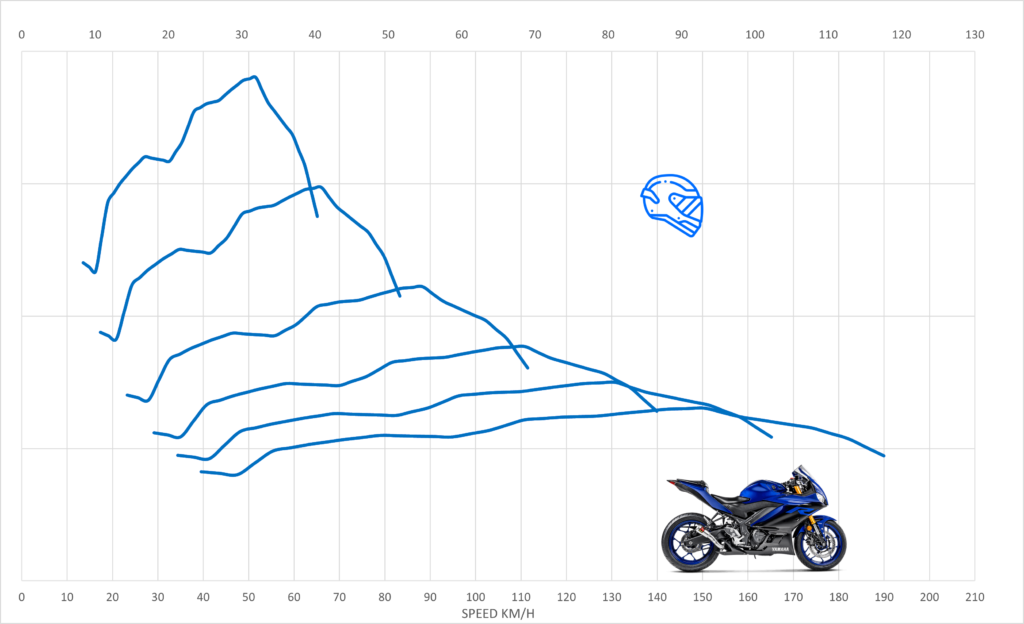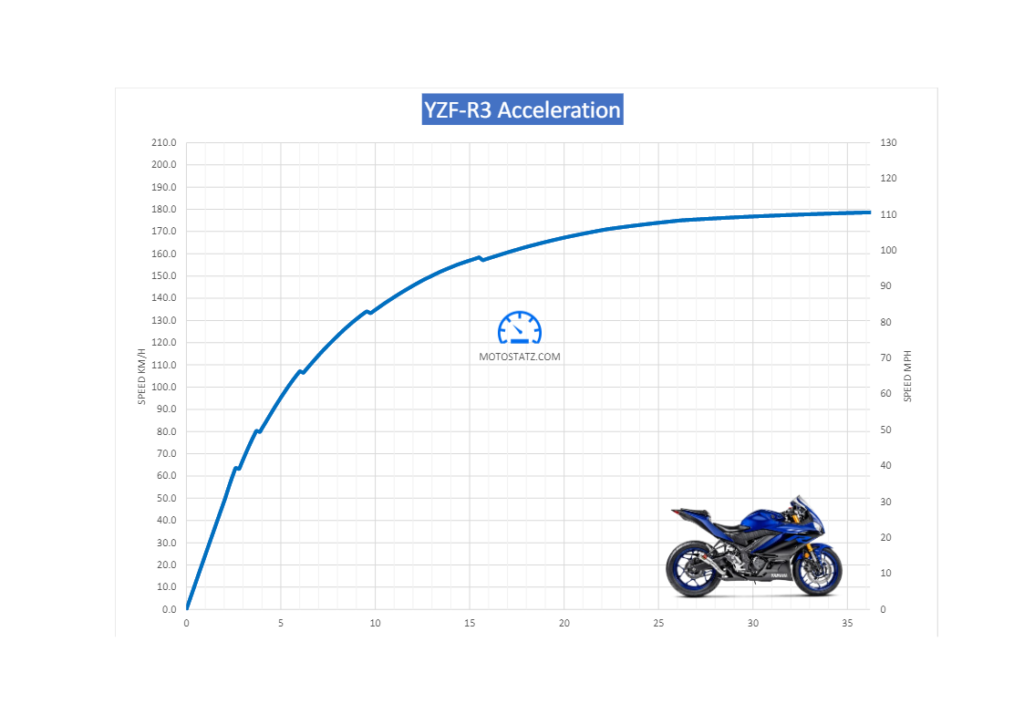Yamaha YZF-R3 does 0-60 in 5.1 and 0-100 mph in 17.10 seconds
Yamaha was a little late to the low-capacity entry-level sportbike market that saw several new bikes introduced by competitors in the last decade.
Yamaha probably saw the success that Kawasaki was having with their Ninja 250 and Ninja 300 bikes and saw an opportunity to cash in.
One way of doing thos would be by leveraging the name of the very popular and somewhat legendary ‘R’ series of bikes such as the R1 and R6.
Then they introduced an entry-level machine that at the time sat neatly at the bottom of the R series family but resembled the larger motorcycles in the series.
2015 was the year that Yamaha unleashed the YZF-R3 unto the world!
The small and lightweight two-cylinder bike firmly focused on toppling what was at the time one of the most popular entry-level sportsbikes. Which was the Ninja 300.
The R3 came with a larger capacity parallel two-cylinder engine at 321 cc vs the Ninja 300’s 296 cc.
Power was only up a claimed 3 hp while torque was 1.8 lb/ft more than the Ninja 300.
Despite the larger engine, Yamaha managed to undercut its main rival in the weight department, coming in at 167 kg dry and thus making it 7 kg lighter than the Ninja.
When you only have 42 hp even small weight savings can have a profound effect on straight-line performance.

YZF-R3 Dyno Curve / Engine Performance
The Yamaha YZF-R3 makes a respectable 37 hp @ 10500 rpm and 20 lb/ft @ 9000 rpm at the rear wheels.
Good respectable numbers and puts the YZF-R3 mid-pack in the 250-500 class of entry-level sportbikes but KTM’s 390 series looks more impressive.
The Yamaha YZF-R3 does produce its peak torque quite close to its peak power at only 1500 rpm apart.
But there is a good drive available from 7000 rpm, which is the sweet spot in the power curve and exactly where you’d want to keep the motor buzzing if getting a move on or chasing down your friends through your roads of choice.

In-gear thrust curve
Even below 7000 rpm for general making progress, the R3 drives well from 3500 rpm right to when it takes off a little over 6000 rpm.
If we were to compare it to Kawasaki’s Ninja 300, the R3 engine is generally more flexible in almost all scenarios and especially so in second and third gear, and from 6000 rpm upwards in the remaining gears.
But the R3 does run with longer gearing than the Ninja 300, so its power and torque advantage does not really show as evidently as you’d expect.
But you more on that when we run a piece comparing those two machines back-to-back though you can see the R3 up against the Ninja 400 Here

YZF-R3 Acceleration Curve
Like its engine performance, the Yamaha R3’s straight-line ability falls somewhere in the middle of the entry-level sportbike class that it occupies.
It’s not the fastest but holds its own quite respectively.
What’s most impressive of almost all of the 300 cc plus motorcycles in the category is that they all do sub six seconds 0-60 mph times.
That is a whole lot more performance than a typically entry-level car such as a Yaris or similar.
The R3 is no different, and with a perfect launch from a dig can accelerate from 0-60 mph in 5.10 seconds. 0-80 mph in 8.73 and 0-100 mph in 17.13 seconds.
The quarter-mile benchmark arrives in 14 seconds flat with a terminal speed of 95 mph.
This is a time that beats out one of its main rivals the – Ninja 300, a bike which we tested earlier but does not quite have the legs of its bigger brother the – Ninja 400 .
That bike is a bike that leads the class, and almost bites on the heels of the bikes next up in class such as the MT-07.
Amazingly the R3 is faster than the restricted A2/LAMS CBR650R despite having half the engine size

Kawasaki Ninja 400 vs Yamaha YZF-R3 HERE
If you hold on tight and tuck real tightly the Yamaha R3 is good for a top speed of 112 mph.
Our bike does not hold onto its power as well as some other R3’s from 11,000 rpm so your mileage may vary.
With a tailwind or decline, you can hit a real 120 mph just as you kiss the limiter in 6th.
For best acceleration progress the YZF-R3 is not too fussy, so you can flick the next gear anywhere between 10500 rpm and 12,000 rpm and you will still achieve consistent timed runs.
Again, I’ll emphasize, like all low cc low power bikes, their acceleration figures can vary greatly between riders and tests.
With a lighter rider versus a heavy rider, or if you are accelerating into a headwind or aided by a tailwind times will be affected.
An extra 10 kg or an extra 10 mph headwind will eat into 40 horsepower more than it would 200 hp.
If you have your eye on an YZF-R3 as your first sportbike, while it may not be the fastest option out there, it will certainly put a smile on your face as it offers up more than enough straight-line performance to get the blood flowing.
| Yamaha YZF-R3 Acceleration | |
| Speed | Time |
| 0-10 mph | 0.57 |
| 0-20 mph | 1.31 |
| 0-30 mph | 1.98 |
| 0-40 mph | 2.85 |
| 0-50 mph | 3.93 |
| 0-60 mph | 5.10 |
| 0-70 mph | 6.82 |
| 0-80 mph | 8.73 |
| 0-90 mph | 11.83 |
| 0-100 mph | 17.13 |
| 0-110 mph | 30.677 |
| SS/QM | 14.07/95 mph |
| SS/KM | 26.926/108 mph |
| SS/Mile | 39.087/112 mph |
| Top Speed | 112.4 mph |



















